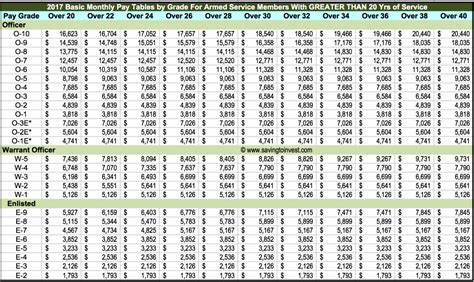Evenness Shannon Index

The concept of evenness, particularly in the context of biodiversity and ecological metrics, is intricately linked with the Shannon Index, also known as the Shannon-Wiener Index or the Shannon Diversity Index. This index is a quantitative measure that describes the diversity of a community or population, incorporating both the richness (number of species) and the evenness (relative abundance of each species) components of diversity. The Shannon Index is named after Claude Shannon, who developed the concept of entropy in information theory, which is directly applicable to measuring diversity in ecological contexts.
Introduction to the Shannon Index
The Shannon Index (H) is calculated using the formula:
[ H = - \sum_{i=1}^{S} p_i \ln p_i ]
where: - (S) is the number of species, - (p_i) is the proportion of individuals in the (i^{th}) species, calculated as (n_i / N), - (n_i) is the number of individuals in the (i^{th}) species, - (N) is the total number of individuals in the community, - (\ln) is the natural logarithm.
This index values range from 0 (when there is only one species present) to a maximum value of (\ln(S)) (when all species are equally abundant). A higher Shannon Index value indicates greater diversity.
Evenness Component
Evenness refers to how evenly the individuals are distributed among the species. It is a measure of how close to equal the abundance of each species is. The evenness component of diversity can be quantified using the Pielou’s evenness index (E), which is calculated from the Shannon diversity index as follows:
[ E = \frac{H}{\ln(S)} ]
Where: - (H) is the Shannon diversity index, - (S) is the number of species.
Evenness values range from 0 to 1, where: - A value of 1 indicates perfect evenness (all species have the same abundance), - A value close to 0 indicates that one species dominates the community.
Significance of Evenness in Ecological Studies
Understanding evenness, as part of the broader concept of biodiversity, is crucial for several reasons: 1. Ecosystem Stability: Higher evenness may contribute to ecosystem stability, as a more even distribution of species can lead to a more resilient community against environmental changes or invasions. 2. Functionality: Evenness can affect ecosystem function. For example, if one species significantly outcompetes others, it might dominate ecosystem processes, potentially reducing the overall functional diversity of the ecosystem. 3. Conservation Efforts: In conservation biology, understanding the evenness of species distributions can help in identifying areas that are more diverse and, thus, potentially more valuable to preserve. 4. Monitoring Environmental Changes: Changes in evenness can serve as indicators of environmental health or stress. For instance, a decrease in evenness might signal pollution or other disturbances affecting the ecosystem.
Methodological Considerations
When calculating the Shannon Index and evenness, several methodological considerations are important: - Sampling Effort: The accuracy of diversity and evenness measures depends on the thoroughness of the sampling. Under-sampling can lead to underestimation of species richness and overestimation of evenness. - Species Identification: Accurate species identification is crucial. Misidentification can lead to incorrect diversity and evenness estimates. - Statistical Analysis: Due to the variability of ecological communities, statistical tests should be applied to compare diversity and evenness among different sites or over time.
Conclusion
The concept of evenness, as measured through indices like Pielou’s evenness and as a component of the Shannon Diversity Index, is a critical aspect of understanding ecological diversity. It provides valuable insights into the structure and function of ecosystems, which are essential for conservation, management, and research. By analyzing evenness in conjunction with species richness, researchers and practitioners can gain a more comprehensive understanding of biodiversity and its implications for ecosystem health and functionality.
What is the significance of evenness in ecological diversity?
+Evenness is crucial as it reflects how evenly individuals are distributed among species, impacting ecosystem stability, functionality, and conservation efforts. Higher evenness may contribute to a more resilient ecosystem against environmental changes.
How is the Shannon Index used to measure biodiversity?
+The Shannon Index is a quantitative measure that describes the diversity of a community or population, incorporating both the richness (number of species) and the evenness (relative abundance of each species) components of diversity. It is calculated using the formula: H = - \sum_{i=1}^{S} p_i \ln p_i , where S is the number of species and p_i is the proportion of individuals in the i^{th} species.
What are the implications of high and low evenness values in ecological studies?
+A high evenness value (close to 1) indicates that species have similar abundances, suggesting a stable and resilient ecosystem. Conversely, a low evenness value (close to 0) indicates that one or a few species dominate, potentially leading to reduced ecosystem functionality and increased vulnerability to disturbances.
In conclusion, the Shannon Index, through its incorporation of evenness, provides a comprehensive tool for understanding and analyzing biodiversity, offering insights that are invaluable for ecological research, conservation, and management practices. Its application can help in identifying diverse ecosystems, monitoring environmental changes, and guiding conservation efforts to preserve biodiversity.
The concept of evenness, as part of the broader biodiversity framework, is essential for understanding ecosystem health, stability, and functionality. The Shannon Index, by quantifying both richness and evenness, serves as a valuable metric in ecological studies, offering insights into the complex interactions within ecosystems and guiding conservation and management strategies.
Therefore, understanding and applying the principles of the Shannon Index and evenness can significantly contribute to the preservation of ecological diversity and the sustainability of ecosystems, emphasizing the importance of continued research and application of these principles in real-world conservation scenarios.

